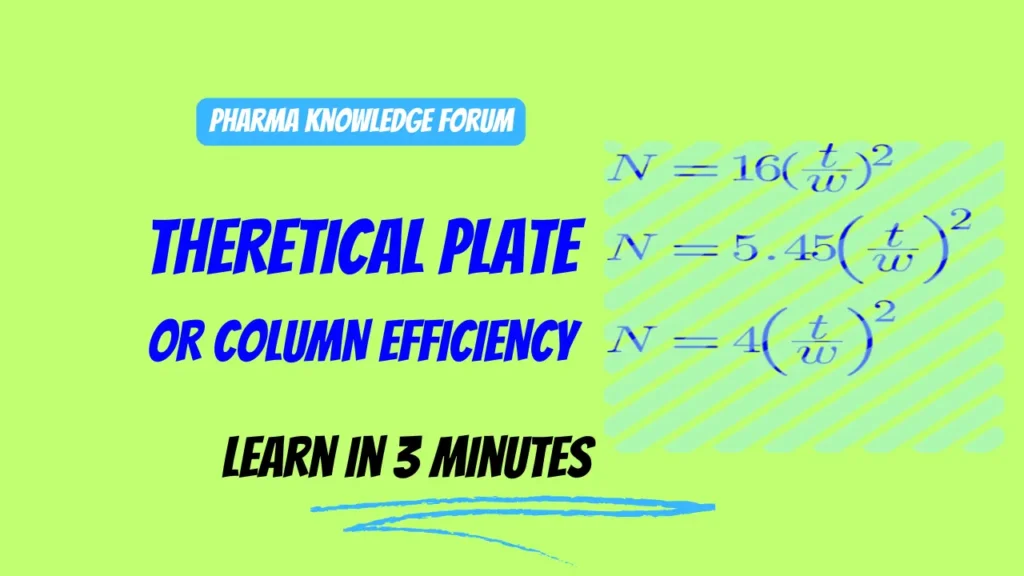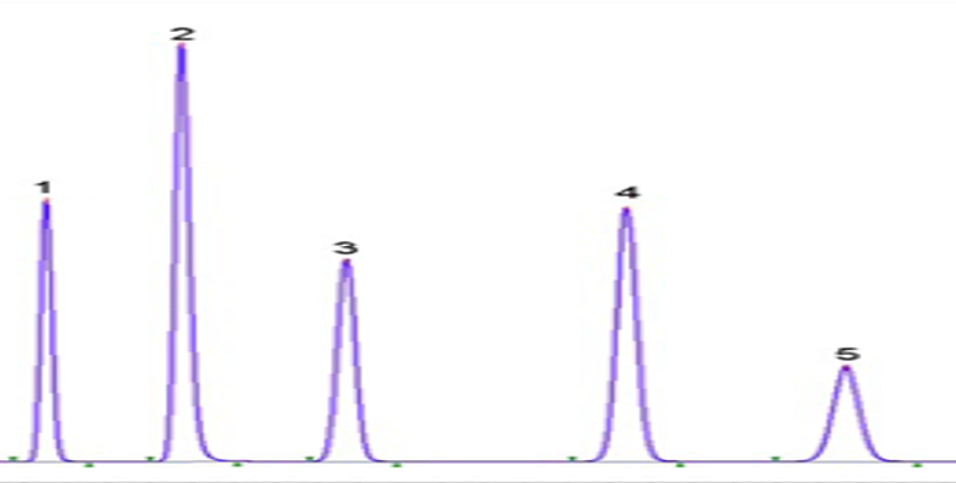Column Efficiency or Theoretical Plate: How to Understand
Table of Contents
- Introduction and Background
- Column efficiency or Theoretical plate
- Column efficiency formula
- Acceptance criteria
- Role of Column efficiency in Chromatographic development
- Factors affecting Column efficiency
- Conclusion
Introduction and Background
Column efficiency or Theoretical plate plays a vital role in HPLC and GC method development. That is why it is used as one of the system suitability parameters. In this article, I will share my skill-based knowledge so that you can use the same effectively during HPLC and GC analysis. In this article, you will learn:
- What is column efficiency or Theoretical plate?
- How it is calculated?
- What is the role of Column efficiency or Theoretical plate in chromatographic analysis?
- What are the acceptance criteria for Column efficiency or Theoretical plate?

Column efficiency or Theoretical plate
Column efficiency or theoretical plate tells about the sharpness of the chromatographic peak. It is denoted by N. It is characteristic of the column.

As we go from peak-1 to peak-4, peak sharpness decreases or in other words, peaks are getting broader and broader. Therefore peak-1 will have a high theoretical plate whereas peak-5 will have a lower theoretical plate in the above chromatogram (See figure-1)
Column efficiency Formula
There are several formulas are available for calculating the N. But in industries, following two formulas are widely used:
N = 16 (t/w)2
Where t is the retention time and w is the peak width at baseline
or
N = 5.54 (t/w)2
Where t is the retention time and w is the peak width at half height
- Formula-1 is used for those peaks which are sharp peaks and symmetrical peaks
- Formula-2 is used for broad and peaks unsymmetrical peaks
Case studies for Column efficiency or Theoretical plate
- Non-polar compounds like Naphthalene, Anthracene etc. give sharp peaks in the HPLC and hence for such molecules formula-1 can be used
- Basic compounds or polar compounds like Azithromycin, Erythromycin etc. give broad and unsymmetrical peaks in HPLC and hence in that case formula -2 shroud be used.
- Most of the molecules like Methanol, Ethanol, benzene etc give a sharp peak in GC using a capillary column and hence for such molecule formula-1 can be used.
- Amino compounds like Aniline, Triethylamine etc. give a broad peak in GC and hence in that case formulae -2 can be used
Acceptance criteria for Column efficiency or Theoretical plate
- Based on trend data limit should be kept
- Generally for HPLC analysis. N≥2000 for HPLC analysis
- But for some molecules like Azithromycin limit of N less than 2000 is also kept with scientific justification. N ≥1500 for Azithromycin.
Role of Column efficiency or Theoretical plate in Chromatographic development
- The higher is the value of the Column efficiency or Theoretical plate, better is the method
- Higher the value of the Column efficiency or Theoretical plate, the sharper is the peak
- It is one of the SST parameter
- Higher the value of theoretical plate more components can be separated in a single run
Factors affecting Column efficiency or Theoretical plate
Column efficiency or Theoretical plate depends upon the following factors:
- Column Temperature: N is directly proportional to column temperature
- Stationary phase purity and chemistry: N depends upon the chemistry and purity of the stationary phase. Nis directly proportional to the purity of the stationary phase
- Buffer: Nid directly proportional to the buffer concentration
- pH: Some of the molecules having low N beyond certain pH range
- Peak shape: N is directly proportional to the peak sharpness
- Injection volume: N is inversely proportional to the injection volume
- Analyte concentration: N is inversely proportional to the Analyte concentration
- Peak tailing: N is inversely proportional to the peak tailing
- Elution time/Retention time: N is directly proportional to the elution time
- Peak width: N is inversely proportional to the peak tailing
Conclusion; Column efficiency or Theoretical plate
I hope this article has cleared all your doubts related to Column efficiency or Theoretical plate and now you can use it effectively during HPLC and GC method development. This is all about this article. Write your opinion/question related to this article in the comment section and I will answer it on a priority basis.
FAQS
What do you understand by column efficiency in chromatography?
Column efficiency or theoretical plate tells about the sharpness of the chromatographic peak. It is denoted by N.
How do you know if a chromatography column is highly efficient?
The higher the theoretical plate sharper the peak and the better is the column
How do you calculate column efficiency?
N = 16 (t/w)2, where w is the width of the peak and t is the retention time of the peak
References
- Azithromycin USP monograph
- Journal of Al-Nahrain University
Abbreviations
- N: Theoretical plate
- SST: System suitability test
- HPLC: High performance liquid chromatography
- GC: Gas chromatography


